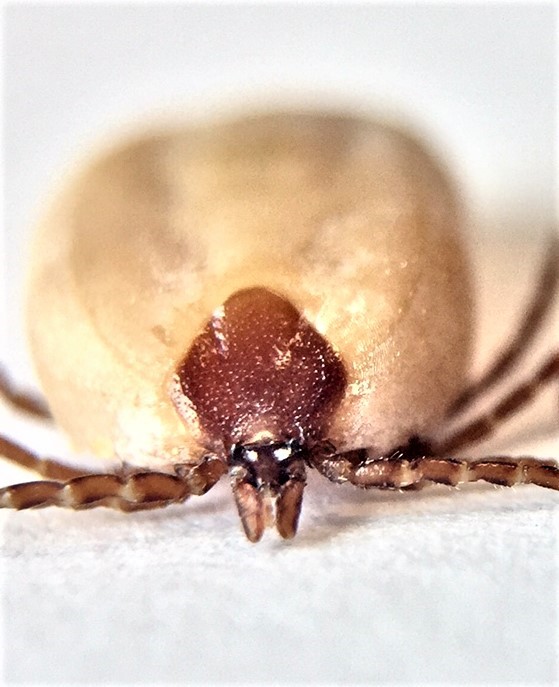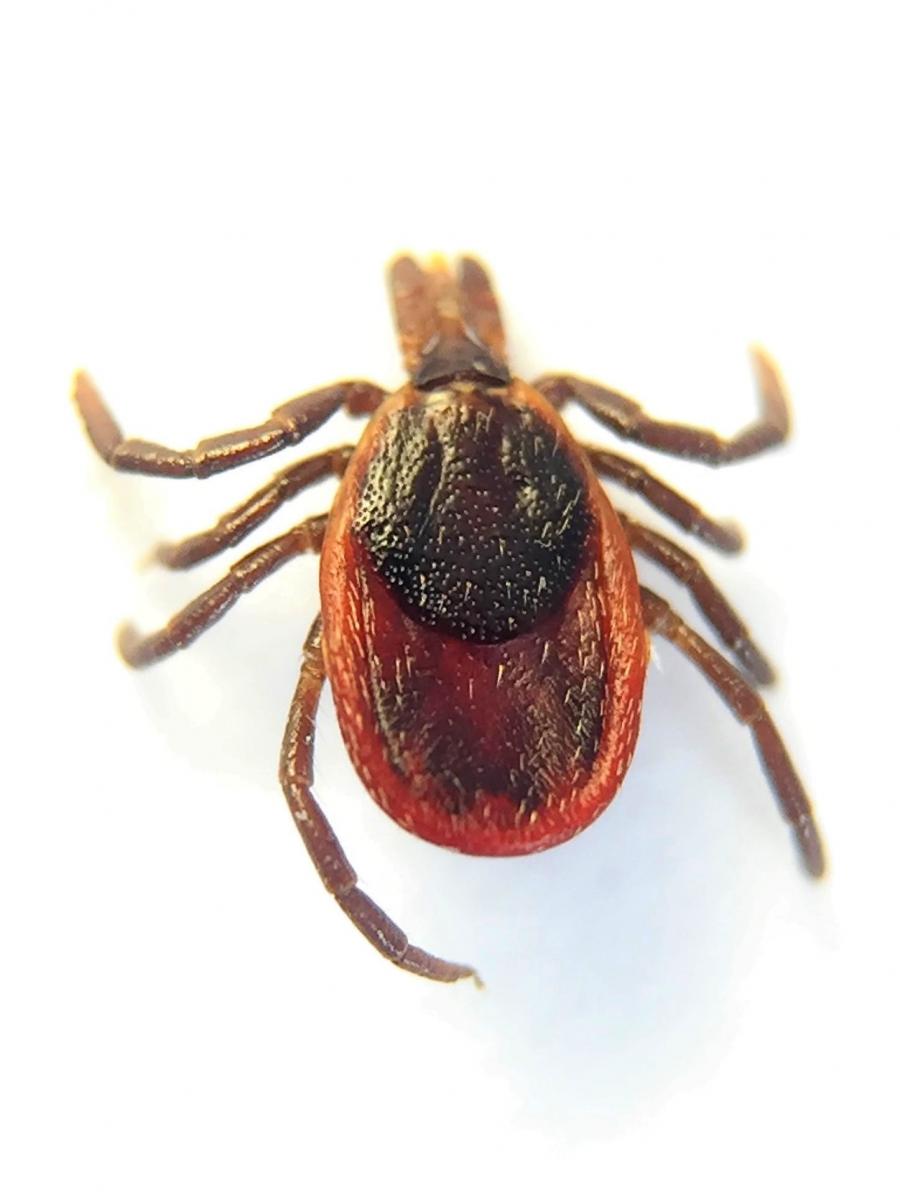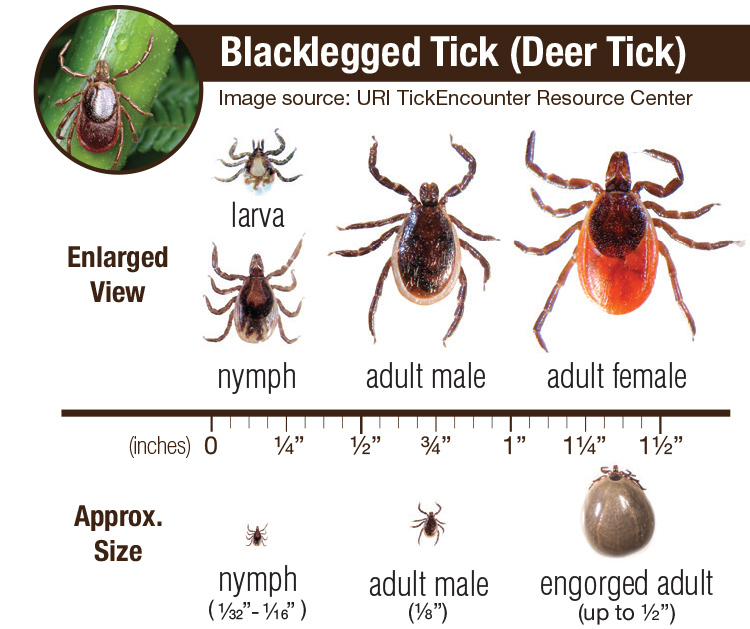Submit tick photo for identification
Ticks are small arachnids that can bite humans and animals. Some ticks can carry germs that cause illness. These are called tick-borne diseases.
This page will help you understand:
- What to do if you find a tick
- How to submit at tick for identification
- How to prevent tick bites
- Tick-borne illnesses like Lyme disease and Rocky Mountain spotted fever
- The impact of climate change on tick activity
What to do if you find a tick
If your find a tick attached to you or your pet:
- Remove it as soon as possible using tweezers or a tick remover.
- Follow these tick removal instructions:
- Submit the tick for identification
- Take a clear photo of the tick and send it to us using our Online Tick Photo Submission Form.
- Need help getting a good shot of your tick? Check out our helpful hints for getting a good tick photo below.
-
While waiting for a response, don’t throw the tick away. Place it in a small container with rubbing alcohol.
- Tips for getting a good tick photo
-
The tips below are intended to help you take clear photos at the right angle to help us to identify your tick quickly. If the photos are not clear and do not show the right angle, we may need to contact you to ask for more photos.
How should I take the photo?
- Make sure your photo is well lit – either outside or under a lamp.
- Use tweezers to place tick on a light coloured, flat surface.
- Choosing the photo angle is important:
- For a tick that appears swollen, take the picture from the front and focus on the face and shield area of the tick. See the example photo below. In this photo, the shield is the dark area shaped like a diamond with rounded edges. For different tick species the shield may look different, but will be in the same location. It is important that the shield is clear in the photo.)

- For a tick that appears to be flat (not swollen), take the photo from above looking down at the tick’s back. See the sample photo below.

How do I get a good close up photo?
- For some tips on taking a close up photo of small objects using a phone, check out these tips: How to Take a Close Up Photo with a Smartphone. One key tip is to first zoom in using the phone’s screen before taking the picture, pause to allow the camera to refocus, and then take the picture.
- Take several photos and choose the best few to submit.
- You can crop the image and adjust the lighting to make the tick appear as clear as possible.
Does it matter what device that I use?
It’s okay to use any device that you have available to you. When possible, consider the following:
- Cell phones are generally a great choice for taking photos.
- If you can, avoid using a tablet. Tablets often have lower quality cameras and their larger size means that the tablet is more likely to cast a shadow on the tick.
- If your digital camera has a macro setting or lens and you are familiar with how to use it, it’s a great choice. Otherwise, cameras on phones are often better than digital cameras.
How do I submit my photo?
- Visit our Tick Photo Submission form and follow the instructions.
Note: We use tick photos to track blacklegged ticks in our area. We do not test ticks for diseases.
If you have concerns about a tick bite, contact your healthcare provider or local pharmacist (or veterinarian for your pet) immediately.
Never:
- Flick or scratch an attached tick
- Use petroleum jelly, heat, or nail polish to remove a tick (these take too long to work)
- Remove a tick while holding it around the middle (abdomen)
- Burn an attached tick
These methods increase the risk of infection.
How to prevent tick bites
- Wear light-coloured clothing so ticks are easy to see
- Cover up by wearing closed footwear and tucking pants into socks
- Use a repellent that contains DEET or Icaridin and follow the manufacturer’s directions
- Perform full-body checks on yourself, children, and pets
- When you get home, put your clothes in the dryer on high heat for at least 10 minutes before washing them
- Find out how Lyme disease is identified and treated
- Find out how to reduce ticks around your home
Carry our Tick ID card (PDF) with you for easy reference.
Blacklegged ticks and Lyme disease
Lyme disease is a serious illness caused by bacteria spread through the bite of an infected blacklegged tick (also known as a deer tick). An infected Blacklegged tick must be actively feeding for at least 24 hours to transmit the bacterium that causes Lyme disease. Early stages of Lyme disease may be treated with antibiotics if detected soon enough. Contact your healthcare provider if you are concerned.
Blacklegged ticks are usually found in woody or bushy areas, or areas with tall grass, but because they can be carried by birds it is possible to encounter them in most places. Ticks do not jump, fly or move very quickly, but will wait on low-growing vegetation and then easily latch onto people and animals that brush against them.
For information about risk areas in Ontario, please refer to Public Health Ontario’s Lyme Disease Estimated Risk Areas Map. Always take precautions in woody or bushy areas, or areas with tall grass, even if they have not been identified as higher risk areas on the map.
Rocky Mountain Spotted Fever (RMSF)
Rocky Mountain spotted fever (RMSF) has not been reported in Wellington-Dufferin-Guelph. RMSF is a serious bacterial illness spread by the American dog tick. This tick is common in Ontario, including the WDG area, but RMSF is rare in Canada. However, if you were bitten by a dog tick (especially while visiting the Long Point region of southwestern Ontario) and you develop symptoms that could be RMSF, see a doctor right away.
Symptoms of RMSF
Symptoms usually start 2 to 14 days after a tick bite and may include:
- Fever
- Headache
- Muscle aches
- Nausea or vomiting
- Rash (often on the wrists and ankles)
- Belly pain
- Confusion or problems with bleeding (in severe cases)
Getting treatment quickly is important to avoid serious illness.
For dog owners
A small number of RMSF cases have been reported in dogs bitten by American dog ticks, especially if they had been to the Long Point region in southwestern Ontario.
If your dog has been bitten by a tick and shows signs like fever, lethargy or tiredness, not eating, limping or joint pain, talk to your vet, and mention any tick bites or recent travel to the Long Point region.
Ticks and Climate Change
Climate change is reshaping the landscape of tickborne disease risks here in Ontario. Rising temperatures and longer warm seasons are leading to more abundant tick populations as well as increased tick activity levels and range in Ontario. Ticks are expanding into regions where they were once uncommon and is estimated to continue to expand northward. Across Ontario and Canada, the chance that you may encounter a tick continues to grow and with that comes an increasing risk of tick-borne diseases.
For more information visit:

